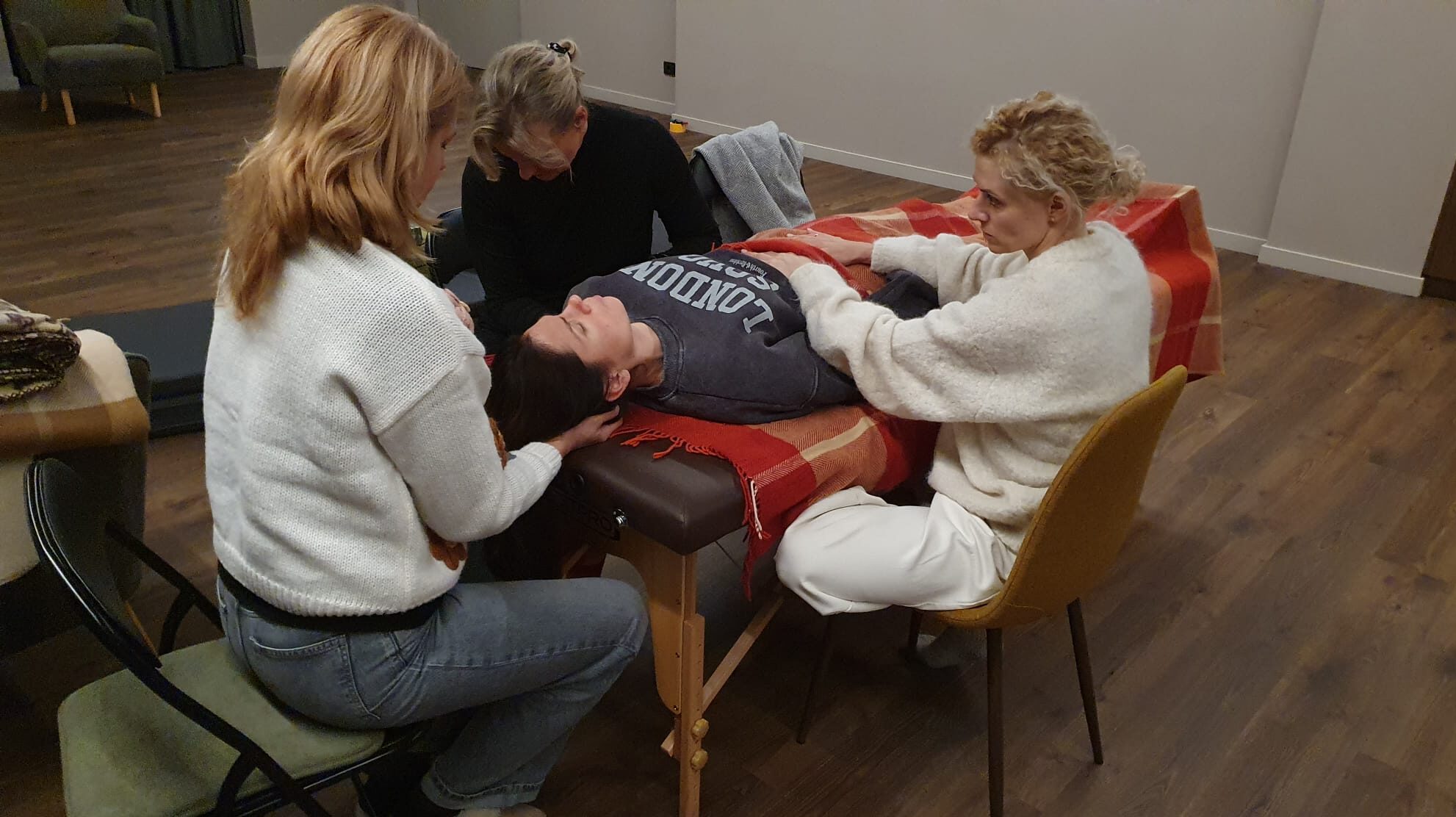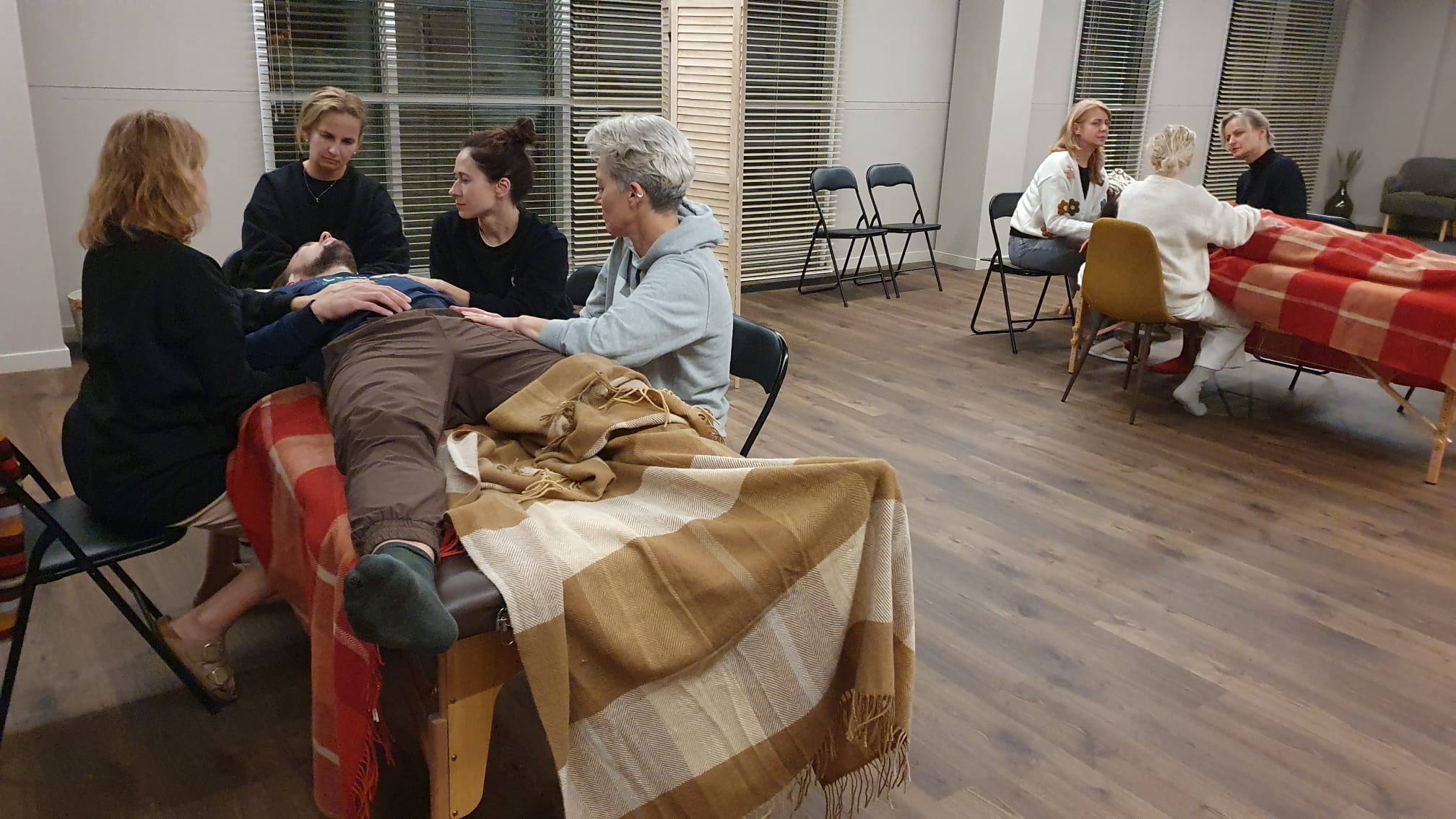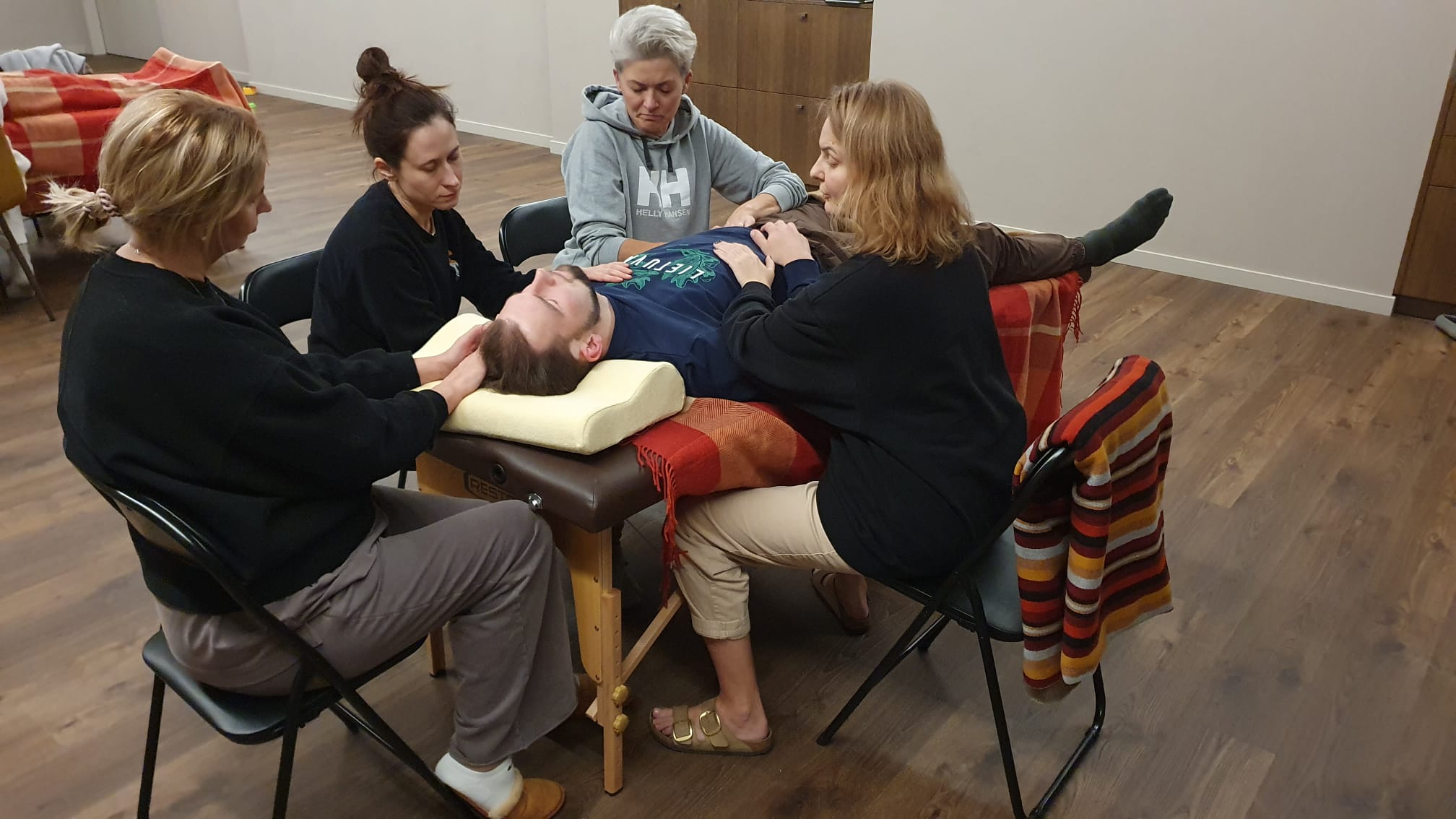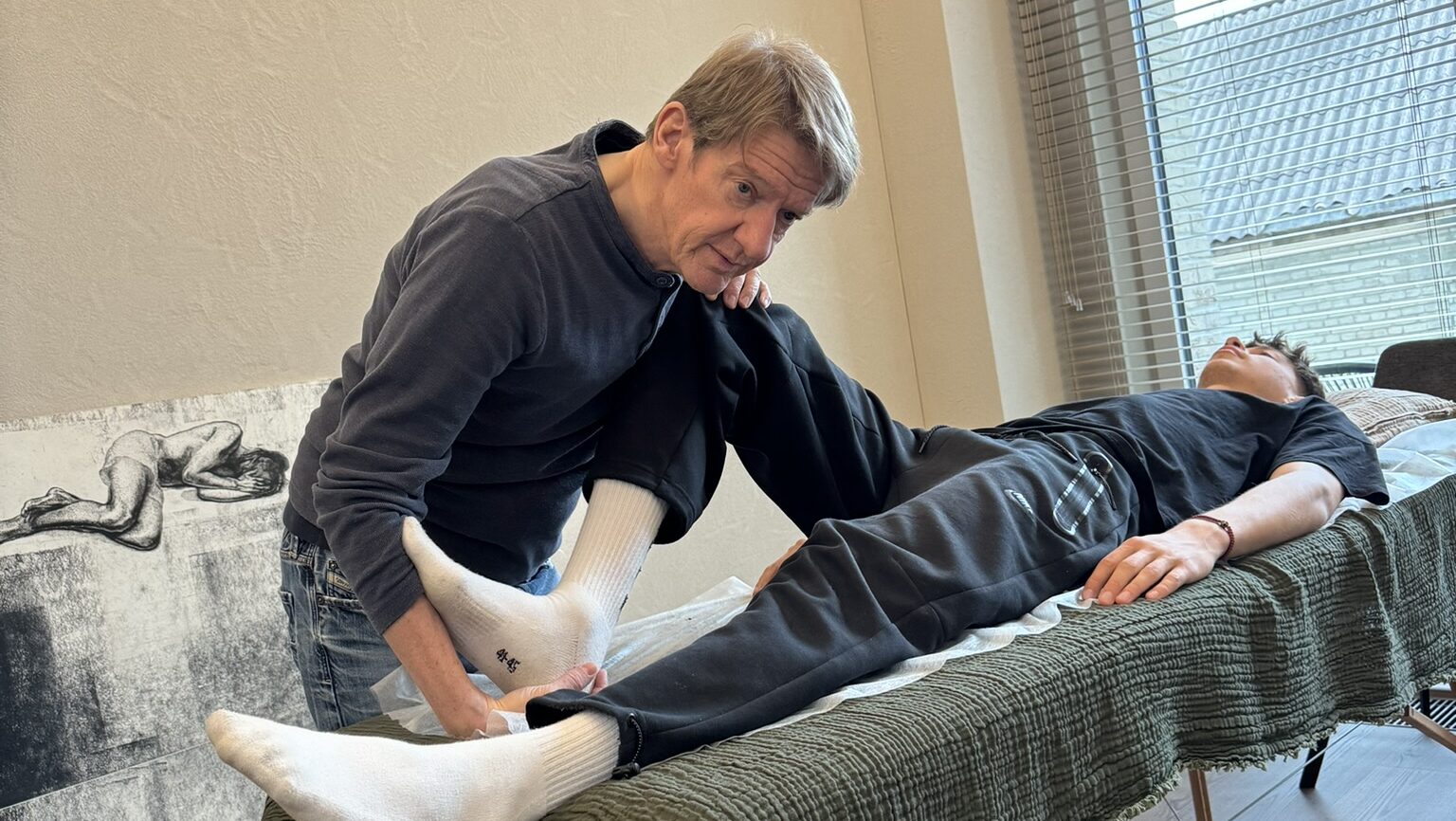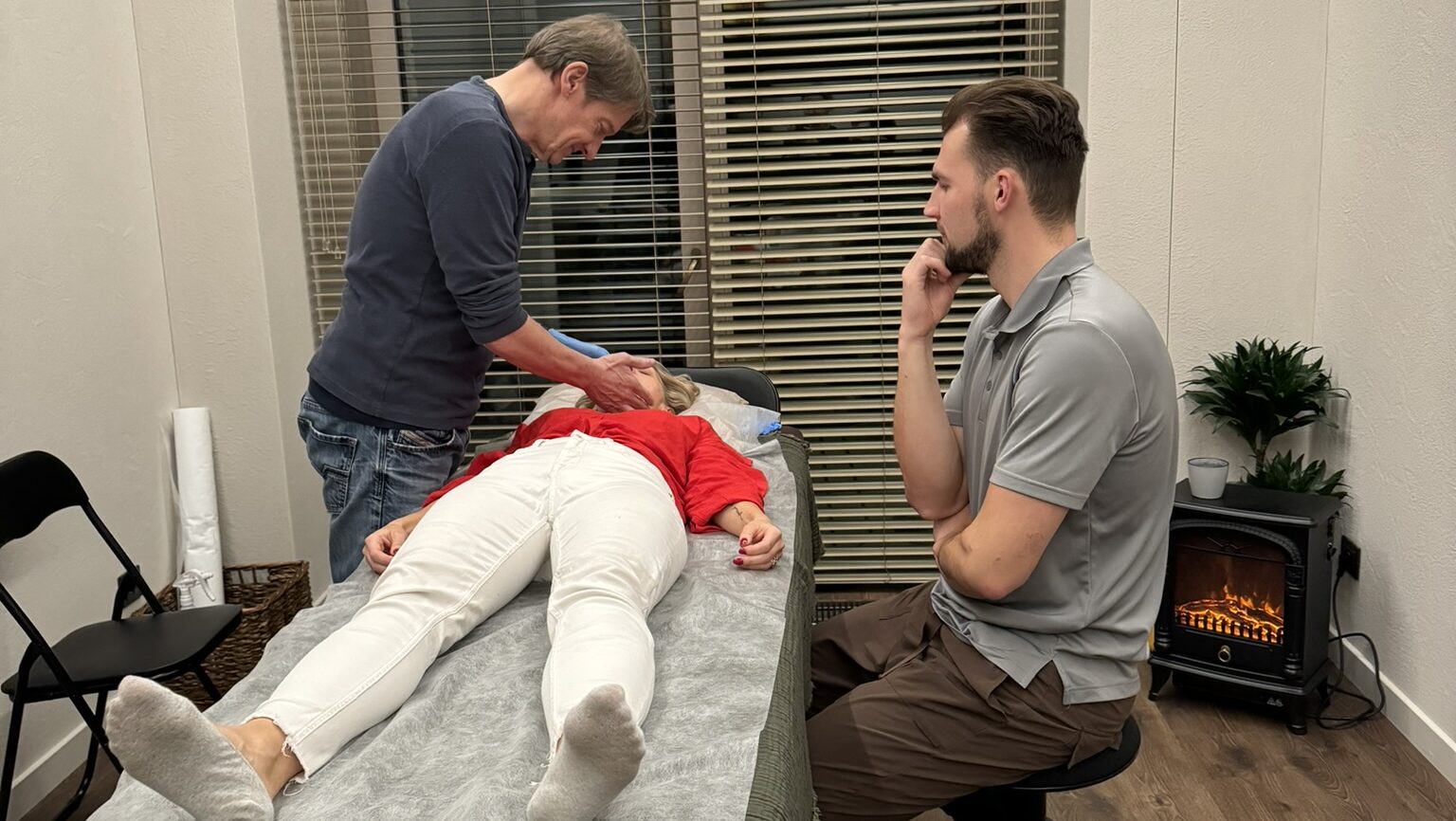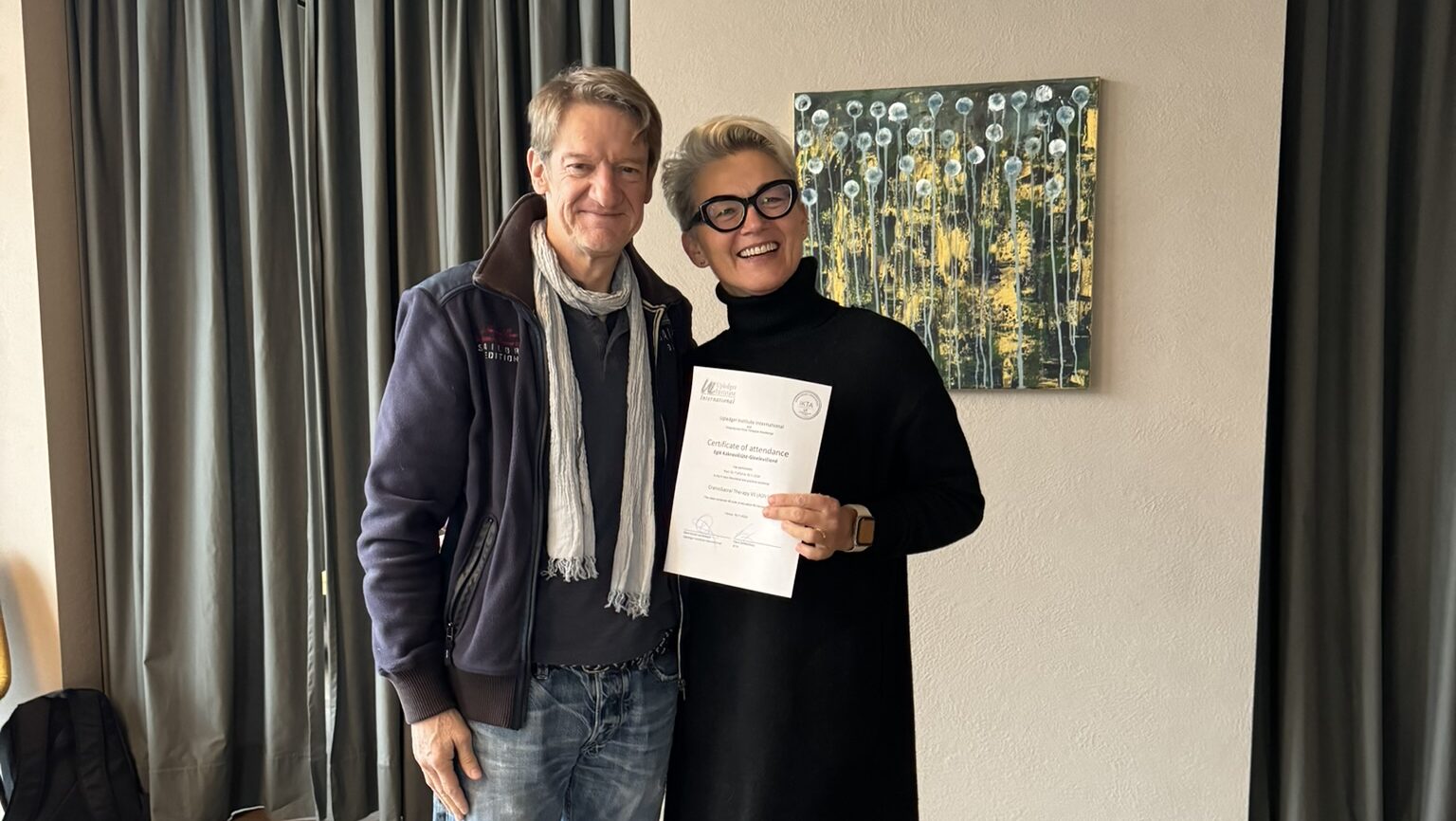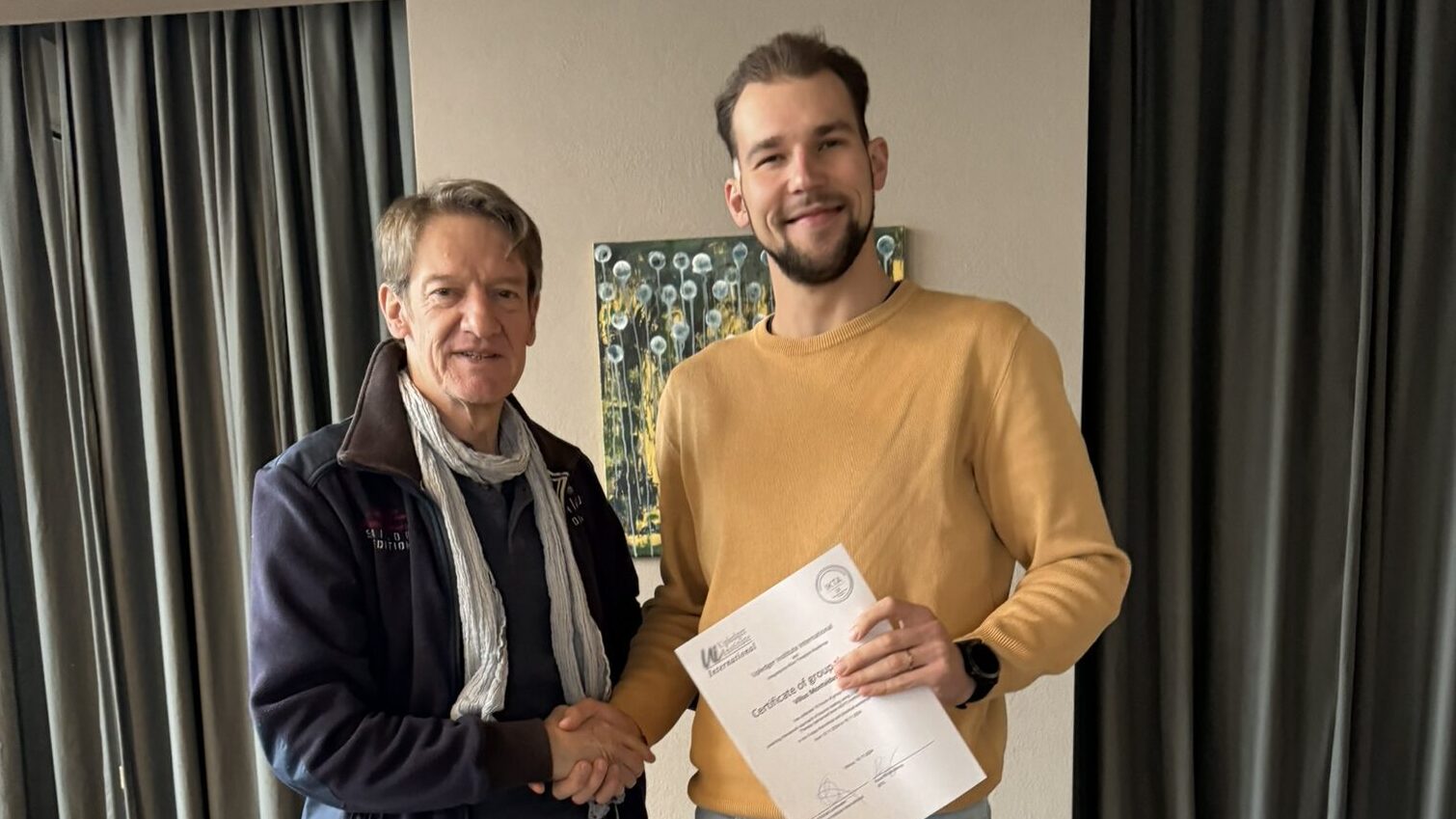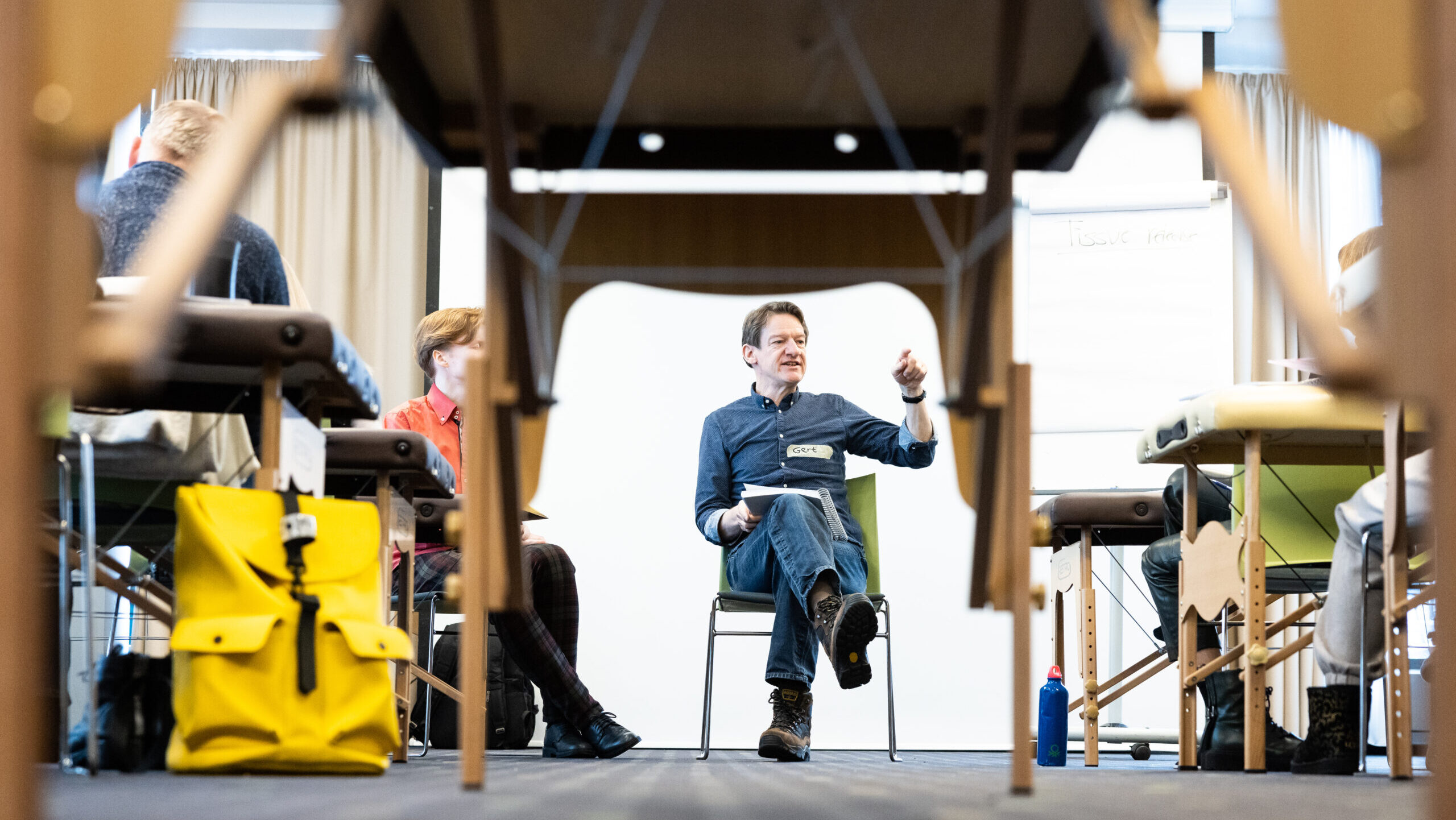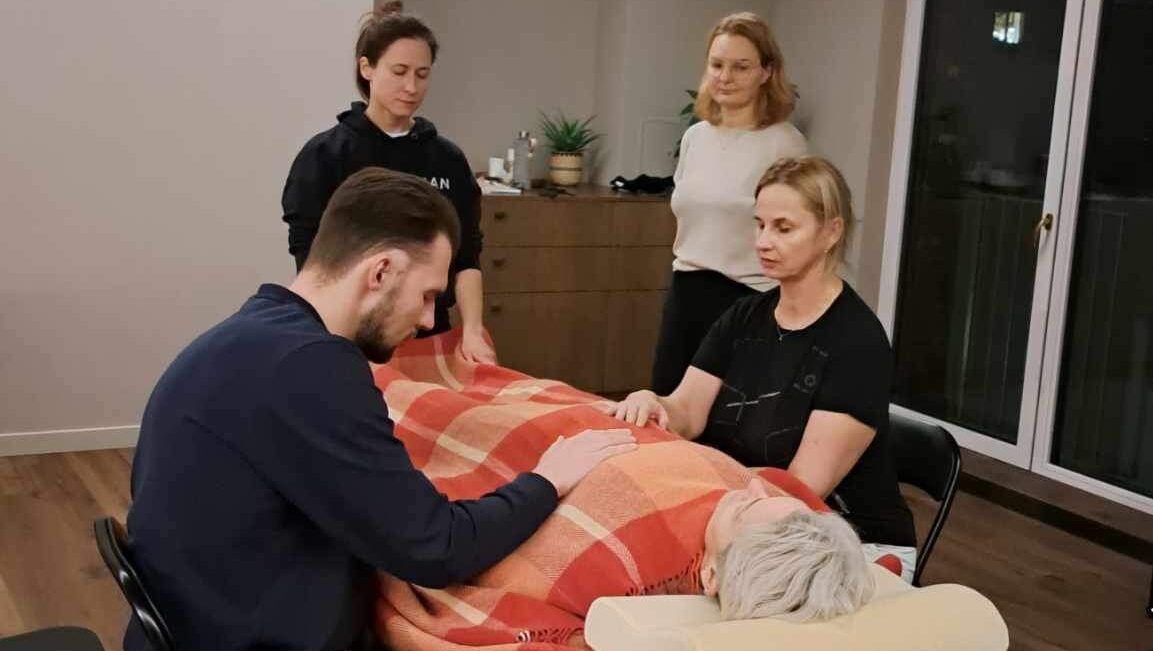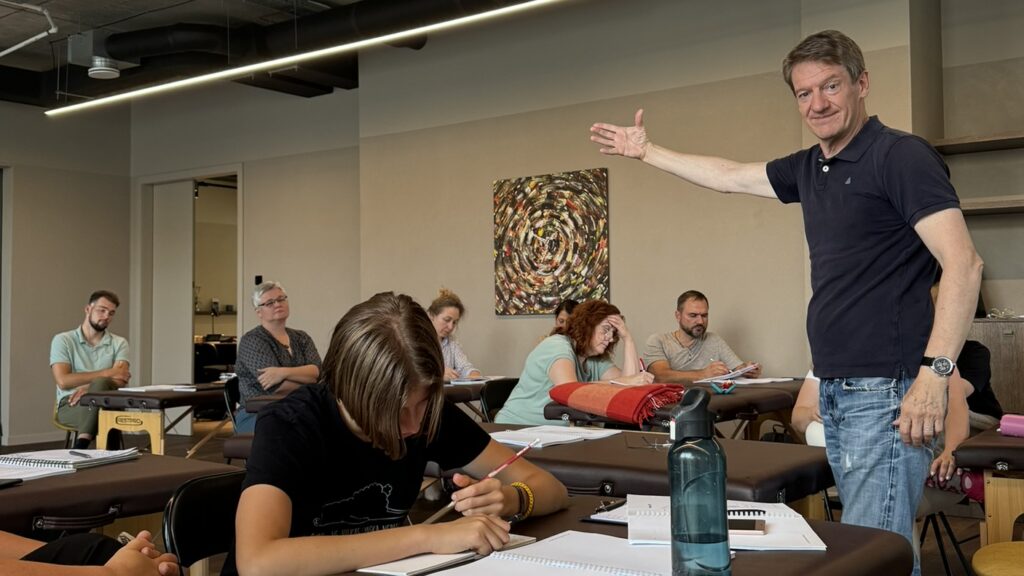
“”Every treatment protocol should be dictated by the wisdom of the patient’s own body.”
Dr. John E. Upledger
What is Craniosacral Therapy?
Craniosacral Therapy – a gentle, hands-on therapy created by osteopath Dr. John E. Upledger, based on research conducted from 1975-1983 at Michigan State University. It aims to evaluate and improve the function of the craniosacral system – the membranes and cerebrospinal fluid that protect the brain and spinal cord.
The therapy helps release deep tension, reduces pain, improves nervous system function, and enhances natural healing. It’s applied for chronic pain, migraines, stress, autism spectrum disorders, post-traumatic stress, etc. Suitable for both adults and children, especially those who have experienced birth trauma or developmental difficulties.
Very light touch is used (about 5 grams of pressure) to detect and correct tissue tensions and restore fluid movement rhythm. Experienced therapists can feel the craniosacral rhythm anywhere on the body and apply gentle corrective movements.
The Upledger Institute, founded in 1985, has trained over 125,000 practitioners in more than 110 countries. Offers basic, advanced and specialized courses, including SomatoEmotional Release (SER) for emotional trauma integration.
The therapy is based on the premise that the body can heal itself if obstacles are removed. It’s increasingly used among holistic approach practitioners.
IKTA – Integrative Therapy Center Training Division – are the official and only representatives of Upledger Institute in Lithuania. More information – video interview with Gert Groot Landeweer.
Gert Groot Landeweer Talks About Craniosacral Therapy
Key Information at a Glance
ℹ️ What: Craniosacral therapy training according to Dr. John E. Upledger’s method – internationally recognized training program. Graduates receive Upledger Institute International certification and are listed in the international therapist registry IAHP.com
ℹ️ Where: Training takes place at Integrative Therapy Center, Vytenio st. 4, Vilnius. More practical information about location, transportation, accommodation options etc. can be found here.
ℹ️ When: Training takes place continuously according to scheduled timetable. To maintain training continuity, it’s important to follow the sequence (CS1 → CS2 → SER1 → SER2 etc.). If you can’t attend a course in your country, missing stages can be completed in any country where Upledger training is conducted. We also welcome foreign students and assistants who come to Lithuania to continue their studies, assist instructors, or complete missing courses.
ℹ️ How: Training is conducted in English, but non-English speaking participants can attend – all courses provide consistent translation into Lithuanian. This allows full engagement in the learning process regardless of language skills.
ℹ️ Price: Price depends on chosen course type (e.g., CS1, CS2, SER etc.). We offer various discounts for early registration, returning participants, students, health professionals, and those currently unemployed or serving. For exact prices and payment plans, please check the schedule for specific courses or contact us – we’ll provide detailed information.
Students, Lecturers and Patients Speak
Ebba Boyesen
Daughter of biodynamic body psychotherapy creator Gerda Boyesen, method developer and co-creator, institute lecturer, therapist
Rita Guginė
Graduate of biodynamic body psychotherapy, practicing biodynamic biorelease massage specialist
Rasa Skrabutėnas
Graduate of biodynamic body psychotherapy, practicing body therapist, ITC co-founder
Studies
Craniosacral therapy training follows a modular principle, allowing participants to gradually deepen theoretical and practical knowledge. The training sequence is based on Upledger Institute international standards, with each module being independent yet forming a cohesive professional development path.
🔹 CS1 – CranioSacral Therapy 1: Foundation course covering anatomy, craniosacral rhythm assessment and gentle touch techniques.
🔹 CS2 – CranioSacral Therapy 2: Deepening knowledge about fascial systems, emotional block influences and further intervention methods.
🔹 SER1 and SER2 – SomatoEmotional Release: Working with emotions stuck in the body, accompanying clients’ internal processes, integration.
🔹 Advanced modules (ADV, diplomas): Specialized topics, accumulating practice hours, preparation for certification.
Participants can choose to attend just one or several modules (provided they’ve completed prerequisite modules in Lithuania or elsewhere), or follow the full certification path. Acquired knowledge is internationally recognized, allowing training to be continued/completed in other countries, following the same sequence.
How to Start?
ℹ️ Where to begin: To participate in the full craniosacral therapy (CST) training program, you must start with the CS1 course. The nearest CS1 course in Vilnius will take place on January 20, 2026, and registration is already open:
Next CS1 in Vilnius:
ℹ️ If you want to start studies earlier, you can attend CS1 and/or CS2 courses in another country, then join our SER1 course in Lithuania in autumn. For your convenience, we’ve prepared information about English-language courses in Europe – a great opportunity to combine professional development with short vacations.
Program
CS1: 10-Step Program
CS2: Cranial Base and Facial Bones
SER1: Energy Cyst Release (Mechanical Aspects)
SER2: Opening Energy Cysts (Emotional Aspects) and SomatoEmotional Release.
TID1a: Therapeutic Imagery and Dialogue.
TID1b: Therapeutic Imagery and Dialogue.
ADV1: Advanced Level Craniosacral Therapy
ADV2: Advanced Level Craniosacral Therapy
Together!

In the photo – one of ADV1 groups at our center. We’re proud of our students who already successfully apply craniosacral therapy working with patients!
Certification
🏅 CST Techniques Level Certification
This certification confirms your ability to apply basic CST techniques. To obtain it, you need:
🔹 Have valid license or certificate allowing to work with people (e.g., physiotherapist, massage therapist, nurse etc.).
🔹 Successfully complete CS1 and CS2 courses.
🔹 Complete 75 practical sessions applying 10-step protocol.
🔹 Pass written essay, objective test and practical/oral exam.
🎓 CST Diploma Level Certification (CST-D)
This is advanced certification level for experienced specialists wanting to deepen their knowledge and skills. Requirements:
🔹 Have valid license or certificate allowing to work with people.
🔹 Successfully complete Advanced 1 (ADV1) course.
🔹 Fulfill all Techniques Level certification requirements.
🔹 Pass Diploma Level written essay, objective test and practical/oral exam.
🔹 Submit three case analyses.
🔹 Complete Preceptorship Program (minimum 30 contact hours), e.g., participate as assistant therapist in intensive program or assist in advanced classes.
🔹 Present 2-4 hour CST presentation to organized group or publish article about CST in third-party publication.
Certificate Maintenance
To maintain certified therapist status, every four years you must complete 24 hours of UII approved continuing education programs. This can include attending CST courses, mentorship programs, symposiums or research conferences.
IAHP – International Therapist Registry
Craniosacral Therapy (CST) specialists who complete our training can be included in International Association of Healthcare Practitioners (IAHP) registry. This public catalog allows clients worldwide to find qualified therapists by their geographic location and specialization.
Being listed in IAHP registry provides these benefits:
🔹 Increases visibility and accessibility to potential clients.
🔹 Confirms your qualification and certification level.
🔹 Allows using UII logo in promotional materials and business cards.
For example, therapist Vilius Montvidas from Vilnius, holding CST-D (Diploma Level) certificate, is included in IAHP registry indicating his qualifications and contact information.

To browse IAHP registry and find therapists by location or specialization, visit: IAHP therapist search.

